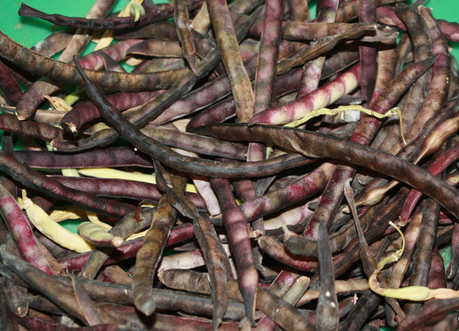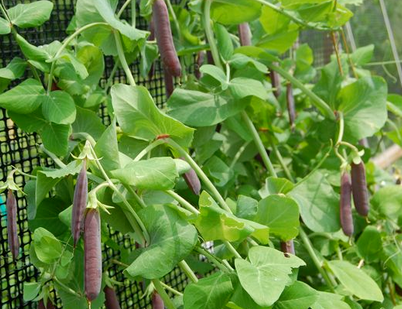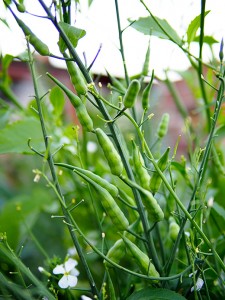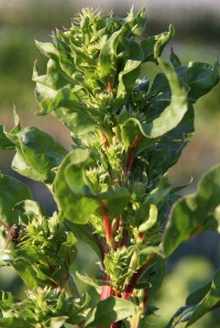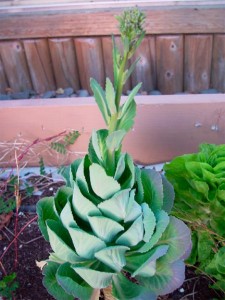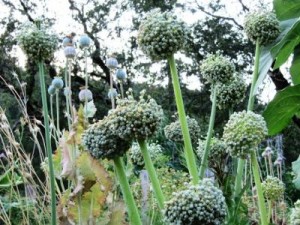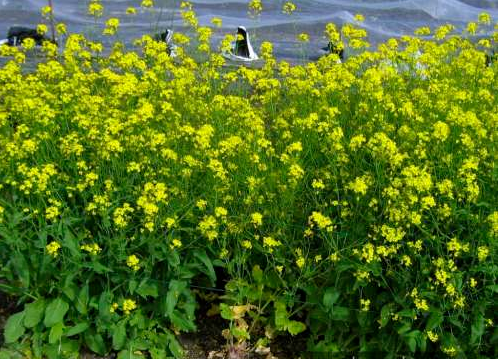Saving your Seeds
Saving seeds allows you to select your favourite and most successful vegetables from your garden for planting the following year. However, many of the seeds commercially available have been genetically modified to yield only one harvest. Look for perennial heirloom seeds. The degree of difficulty to save seeds varies depending on the plant. Easier or beginner plants are bean, lettuce, pea, pepper, and tomato. Plants requiring more experience are cucumber, muskmelon, radish, spinach and squash. Expert seed savers know beet, swiss chard, cabbage, carrot, onion and turnip are the most challenging.
Beginner plants (are the easiest to start with because they are usually self-pollinating. Therefore they do not require the pollen from another plant, and allows you to preserve the vegetables’ species.)
- allow 1 to 2 pods on each bean plant to remain and mature for seed
- caution: too many pods maturing on one plant will stop it from growing new beans and focus on maturing those on the plant instead
- late summer rain can moisten maturing pods so try to pick them before they have been rained on
- leave picked pods to dry completely before storing whole in jars.
Lettuce
- normally a self-pollinating plant but cross pollination can occur
- leaving 25 feet of separation between plants should prevent cross pollination
- lettuce plants flower for long periods of time making it easy to save the dried seed heads when they have dried
- the seed heads can be picked every 2-3 days, or when the majority of the seed heads have dried, hang the plant upside down over a tarp or bag to collect the seeds
- do this before the threat of rain
- don’t easily cross-pollinate but can be caged or bagged to prevent any cross-pollination
- allow pods to mature and pick after they have fully dried on the vine
- if there is threat of rain, pick pods once they have reached full size
- once pods are fully dry, crumble the pod to release seeds
Pepper
- only peppers of the same species can cross-pollinate, therefore there you can safely grow different peppers together and still preserve the species because species will not cross.
- allow peppers to ripen and fully dry on the plant before harvesting
- wash hands thoroughly after touching the seeds of hot peppers to prevent unwanted burning of the eyes or lips through contact
Tomatoes
- almost all modern tomatoes species can be safely grown without concern for cross-pollination
- let tomatoes ripen to at least eating stage on the vine before harvesting
- tomato seeds are best saved when the gelly exterior of the seeds have been removed
- to remove the slippery gel exterior, scoop seeds out of tomato and place in a jar along with a little water, approximately half the quantity as seeds and pulp
- store the sealed jar in a warm location for 1-5 days
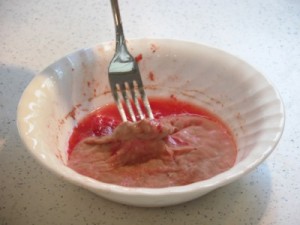
- when bubbling and mould has been present for a day, pour the mixture into a large sloping bowl
- using your fingers, gently separate the healthy and dead seeds (healthy seeds sink to the bottom while dead seeds float to the top)
- rinse seeds with water several times, quickly pouring out the floating dead seeds and slowing to save the heavier healthy seeds at the bottom
- to dry seeds, pour through a fine sieve (making sure the seeds don’t pass through!) trying to remove as much water as possible. Patting the bottom of the sieve with a towel helps.
- lay seeds out on glass or a ceramic plate. Do not use paper as they will stick. Leave to dry in a cool, dry location for 2 to several weeks
- store in jars until ready for use the next year!
Intermediate Plants
Cucumber
- cucumber species will cross-pollinate and require ½ mile isolation between varieties
- allow cucumbers to ripen well past eating stage before harvesting
- once harvested, seeds still require 20 days to age in the cucumber
- clean removed seeds (using the water and sloping bowl method) and dry using the same method as tomato seeds
Melon
- honeydew, melons and muskmelons will cross-pollinate and require ½ mile isolation between varieties
- allow melons to ripen on the vine until skin is hard
- store for additional 3 weeks before removing and cleaning seeds (use water and sloping bowl method to clean seeds)
- dry seeds on glass or ceramic plate
- store in a tight jar in a dry location until use for the following year
- radishes will cross-pollinate with other radishes (such as daikon) but not turnips (cabbage family)
- separate radishes from other species with ½ mile isolation
- allow pods to dry on the plant
- pick pods every 1-2 days (they break open easily releasing seeds soon after drying)
Squash
- members of the squash family require up to a mile for isolation from other species
- different species of the squash will not cross-pollinate but squash of the same genus/family will cross-pollinate
- for summer or soft squashes, (i.e. zucchini) allow squash to mature on the vine past eating when the skin becomes hard and leathery
- harvest the melon when the tendril closest to the melon has dried and withered, then allow to age for another 3 weeks before opening the melon to clean and remove the seeds (use water and sloping bowl method)
- dry seeds on a glass or ceramic plate
- for gourds, allow them to mature on the vine until the shells are dry and the seeds rattle if the gourd is shaken
- open the gourd, harvest the seeds and clean by winnowing
- for wet seeded squash, store harvested squash for 20 days before removing seeds
- follow same method of seed fermentation as tomato
Advanced Plants
- these two will cross-pollinate each other (as they are from the same species) and require 2 to 5 miles of separation or wind-proof caging or bagging
- to save beet seeds, extra plants must be planted and left in the ground past the winter
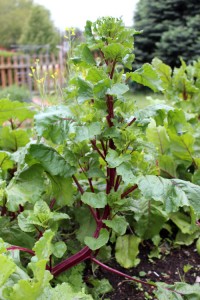
- allow beet seeds to fully mature and dry on the plants before harvesting
- after they are left to dry, they can be easily rubbed off the stems
- to save swiss chard seeds, leave the base and the centre of the chard plant over the winter (outer leaves can be still be harvested and consumed)
- harvest seeds as you would on beets
- cabbage species must be isolated by one mile from other cabbage species
- to save cabbage seeds, extra plants must be planted in a separate area and left in the ground over the winter to produce seed
- harvest seeds when they have fully matured and dried on the plants
- they should be brittle and be harvested just before they split and spill their seeds
Carrots
- require ½ mile isolation to prevent cross-pollination
- carrot tops can be replanted to produce a seed crop in the spring (however they don’t root quickly)
- leave a few carrots to mature in the ground, allowing seed umbels (the feathery tops) to ripe and dry on the plant before harvesting
- after left to fully dry, seeds crumble easily from their umbels
- 1 to 3 miles of isolation is required to prevent cross-pollination
- allow seeds to ripen and dry on plants
- harvest seeds quickly to avoid losing seeds
Turnip
- require 1 mile of isolation from other species (such as Chinese mustards and Chinese cabbage)
- allocate extra turnip plants to allow for seed saving
- leave seeds to fully ripen on the plants before harvesting
information extracted from
http://howtosaveseeds.com/seedsavingdetails.php
Cleaning the Seeds
- seeds are best saved when the gelly exterior of the seeds have been removed
- to remove the slippery gel exterior, scoop seeds out of tomato and place in a jar along with a little water, approximately half the quantity as seeds and pulp
- store the sealed jar in a warm location for 1-5 days
- when bubbling and mould has been present for a day, pour the mixture into a large sloping bowl
- using your fingers, gently separate the healthy and dead seeds (healthy seeds sink to the bottom while dead seeds float to the top)
- rinse seeds with water several times, quickly pouring out the floating dead seeds and slowing to save the heavier healthy seeds at the bottom
- to dry seeds, pour through a fine sieve (making sure the seeds don’t pass through!) trying to remove as much water as possible. Patting the bottom of the sieve with a towel helps.
- lay seeds out on glass or a ceramic plate. Do not use paper as they will stick. Leave to dry in a cool, dry location for 2 to several weeks
- store in jars until ready for use the next year!

